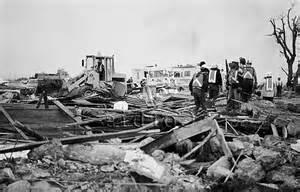Widgetized Section
Go to Admin » Appearance » Widgets » and move Gabfire Widget: Social into that MastheadOverlay zone
How Prepared Are We for the Next Catastrophic Disaster?
The views expressed are those of the author and do not necessarily reflect the views of ASPA as an organization.
By William Waugh, Jr.
December 19,2014
The Ebola episode in the United States suggests that we are somewhat prepared for public health disasters. Yet, we need to shore up our defenses and take a more active role in dealing with public health emergencies before they reach our borders. We are fortunate to be on the periphery of the Ebola crisis, but public health threats are hard to contain. As we saw, even West Africa is a relatively short flight away from American communities. How can we better respond to public health emergencies before they are in our backyard?
 Are we prepared to deal with hurricanes like Sandy, major earthquakes, tornado outbreaks and other catastrophic disasters? As Sandy approached the coast in 2012, communities activated their emergency procedures. Transit systems closed, but communications systems remained operating until they could not and power systems operated until they could not. Emergency management agencies, hospitals, emergency shelters, fire companies, police departments, and National Guard units responded quickly until winds and water forced them to protect their own personnel.
Are we prepared to deal with hurricanes like Sandy, major earthquakes, tornado outbreaks and other catastrophic disasters? As Sandy approached the coast in 2012, communities activated their emergency procedures. Transit systems closed, but communications systems remained operating until they could not and power systems operated until they could not. Emergency management agencies, hospitals, emergency shelters, fire companies, police departments, and National Guard units responded quickly until winds and water forced them to protect their own personnel.
At the height of the storm and in the hours that followed, residents and responders sat in the dark waiting for conditions to improve so that they could leave their shelters. The system mostly worked until the storm forced agencies to batten down their own hatches. Some communities were devastated because there was simply too much wind and water and, sometimes, fire. Unanticipated problems arose, but preparedness efforts largely paid off. Now, some fixes are being implemented, such as moving generators and communications technology to higher floors from basements susceptible to flooding. Some vulnerabilities are being assessed and addressed, such as the vulnerability of New York City’s MTA.
It was a problem that residents of New York and New Jersey expected that Sandy would be like Irene a year before. With luck, when the next mega-storm comes ashore, residents will expect something worse – at least that it will be like Sandy.
There is a difference between dealing with the disasters and preparing for the next one. If we are lucky, some learning happened between the two. We should be better prepared. We should have fixed programs and filled in the gaps. Mitigation efforts should also assure that the next disaster is not as bad as the last. However, we don’t always address problems head-on.
The Biggert-Waters Act was a first step toward managing risk to our coastal communities and other flood-prone areas. But we backed away from measures to force flood mitigation in those communities. We are letting residents rebuild in areas that will experience even worse flooding in coming storms. We are continuing to underwrite development that will flood.
There is a long history of communities subsidizing development in hazardous areas, sometimes without admitting that they were increasing the risk to life and property. Residents are slowly learning to hold public officials legally liable when they fail to address known risks or fail to advise residents when they purchase property in hazardous areas. When they cannot be held legally liable, they can be held politically liable and replaced by officials who will protect health and safety.
Communities are also slowly coming to understand that property owners who insist on building in hazardous areas should compensate the community for the added risk. For example, property owners who build in the urban-woodland interface (meaning in the woods) should pay extra because they will need more fire protection and, in fact, may be increasing the risk of fire to other properties. In some few cases, perhaps the property owners should be told that they are on their own and should purchase their own expensive private fire services (which some property owners already do).
The notion should be how to shift the risk to those who develop the property and those who knowingly buy the risky property, rather than ask the community to cover the added risk. How might we get out of the business of underwriting flood insurance, for example? Communities along the coast, along rivers and streams, and in areas prone to flash flooding are probably unprepared for such a change. They were not prepared for the changing flood plan maps and much higher flood insurance payments that the Biggert-Waters Act mandated.
Instead, the National Weather Service, the U.S. Geological Service and other agencies that monitor hazards, are focusing on improving risk communication. Pictures of residents walking their dogs or simply strolling along boardwalks and beaches as Hurricane Sandy approached land demonstrated the public’s lack of understanding of risk. Cellphone videos of tornadoes during the 2011 and 2012 outbreaks demonstrated the public’s lack of understanding of risk. People were taking pictures rather than taking cover. As a consequence, warnings are becoming more forceful and less ambiguous.
In 2015, hurricane warnings will include graphics showing likely storm surge so that the risk of flooding will be more understandable. Already, authorities may prohibit the sale of alcoholic beverages when hurricane landfall is imminent. Hurricane parties will require more advance planning. What more can authorities do to protect residents?


Follow Us!